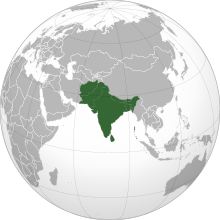**Geography and Climate of South Asia:**
– South Asia is distinct with diverse geographical features like glaciers, rainforests, and deserts.
– Surrounded by the Bay of Bengal, Indian Ocean, and Arabian Sea, with the Indian Plate as its foundation.
– The birth of the Himalayas and Tibetan plateau resulted from the collision with the Eurasian Plate.
– The climate in South Asia is influenced by altitude, proximity to the coast, and monsoons, resulting in varied climate zones from equatorial to alpine.
– Monsoon systems play a crucial role, with distinct summer and winter monsoons affecting the region’s weather patterns.
– Climate change poses challenges such as sea level rise, altered precipitation patterns, and impacts on agriculture and water resources.
**History and Cultural Identity of South Asia:**
– The historical context of South Asia includes ancient civilizations like the Indus Valley and the Vedic period.
– Various empires, such as the Mughal Empire, shaped the region’s history, leading to British colonization and subsequent independence movements.
– Contemporary events like the India-Pakistan partition, conflicts over Kashmir, and the formation of Bangladesh in 1971 are significant milestones.
– South Asia’s cultural identity is diverse, with a blend of religions like Hinduism, Islam, Buddhism, Sikhism, and Christianity.
– The region’s cultural richness is evident in art forms, languages, cinema (e.g., Bollywood), cuisine, and traditional sports like cricket, kabaddi, and kho-kho.
**Population and Demographics of South Asia:**
– South Asia is the most populous and densely populated region globally, with a population of around 2.04 billion.
– The region is home to significant populations of Hindus, Muslims, Sikhs, Jains, and Zoroastrians.
– The United Nations recognizes the eight SAARC countries as part of South Asia, with varying definitions of the region’s boundaries.
– Religious diversity is a hallmark of South Asia, with Hinduism, Islam, Buddhism, Sikhism, and Christianity being major religions in the region.
– Languages in South Asia are numerous and diverse, with shared languages across religious boundaries and unique scripts like Devanagari and Urdu.
**Geopolitical Organizations and Terminology in South Asia:**
– The South Asian Association for Regional Cooperation (SAARC) includes eight member countries and plays a role in regional cooperation.
– China and Myanmar have sought membership in SAARC, reflecting the evolving geopolitical landscape.
– Terminology like Indian subcontinent and South Asia are used interchangeably, with South Asia serving as a neutral and inclusive term.
– The region’s boundaries are defined by geographical features like the Indian Plate and mountain barriers.
– The historical context and conflicts have influenced the terminology and identity of South Asia, with terms like Greater India also being used historically.
**Artistic Exchanges, Architecture, and Sports in South Asia:**
– South Asia has a history of artistic exchanges and architectural synthesis, exemplified by iconic structures like the Taj Mahal.
– The region has faced periods of religious persecution but also instances of religious tolerance, as seen during Akbar’s reign.
– Sports like cricket, kabaddi, and kho-kho are popular in South Asia, with significant fan bases and traditional games being part of major sports competitions.
– Leagues such as the Pro Kabaddi League and Ultimate Kho Kho showcase traditional sports, while events like the South Asian Games and Asian Games feature sports from the region.
– Music also plays a vital role in South Asian culture, contributing to the region’s rich and diverse cultural heritage.
South Asia is the southern subregion of Asia, which is defined in both geographical and ethnic-cultural terms. As commonly conceptualized, the modern states of South Asia include Afghanistan, Bangladesh, Bhutan, India, Maldives, Nepal, Pakistan, and Sri Lanka. South Asia borders East Asia to the northeast, Central Asia to the northwest, West Asia to the west and Southeast Asia to the east. Topographically, it is dominated by the Indian subcontinent and is bounded by the Indian Ocean in the south, and the Himalayas, Karakoram, and Pamir Mountains in the north.
 | |
| Area | 5,222,321 km2 (2,016,349 sq mi) |
|---|---|
| Population | 2.04 billion (2024) |
| Population density | 362.3/km2 (938/sq mi) |
| GDP (PPP) | $18.05 trillion (2024) |
| GDP (nominal) | $5.04 trillion (2024) |
| GDP per capita | $2,650 (nominal) (2024) $9,470 (PPP) (2024) |
| HDI | |
| Ethnic groups | Indo-Aryan, Iranian, Dravidian, Sino-Tibetan, Austroasiatic, Turkic etc. |
| Religions | Hinduism, Islam, Christianity, Buddhism, Sikhism, Jainism, Zoroastrianism, Irreligion |
| Demonym |
|
| Countries | |
| Dependencies | External (1)
|
| Languages | Official languages (national level) Other official languages (provincial/regional level) |
| Time zones | |
| Internet TLD | .af, .bd, .bt, .in, .io, .lk, .mv, .np, .pk |
| Calling code | Zone 8 & 9 |
| Largest cities | |
| UN M49 code | 034 – Southern Asia142 – Asia001 – World |
The South Asian Association for Regional Cooperation (SAARC) is an economic cooperation organization in the region which was established in 1985 and includes all eight nations comprising South Asia. South Asia has a total area of 5.2 million sq.km (2 million sq.mi), which is 10% of the Asian continent. According to the United Nations, the population of South Asia, including Iran, is estimated to be 2.04 billion or about one-fourth of the world's population, making it both the most populous and the most densely populated geographical region in the world.
In 2022, South Asia had the world's largest populations of Hindus, Muslims, Sikhs, Jains, and Zoroastrians. South Asia alone accounts for 90.47% of Hindus, 95.5% of Sikhs, and 31% of Muslims worldwide, as well as 35 million Christians and 25 million Buddhists.
